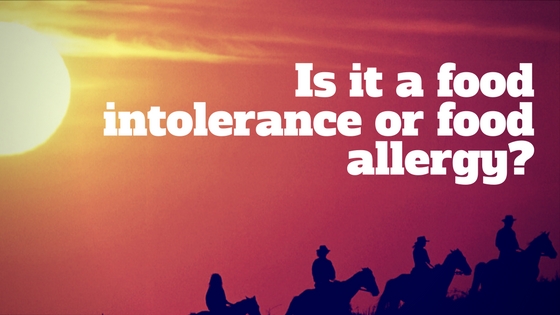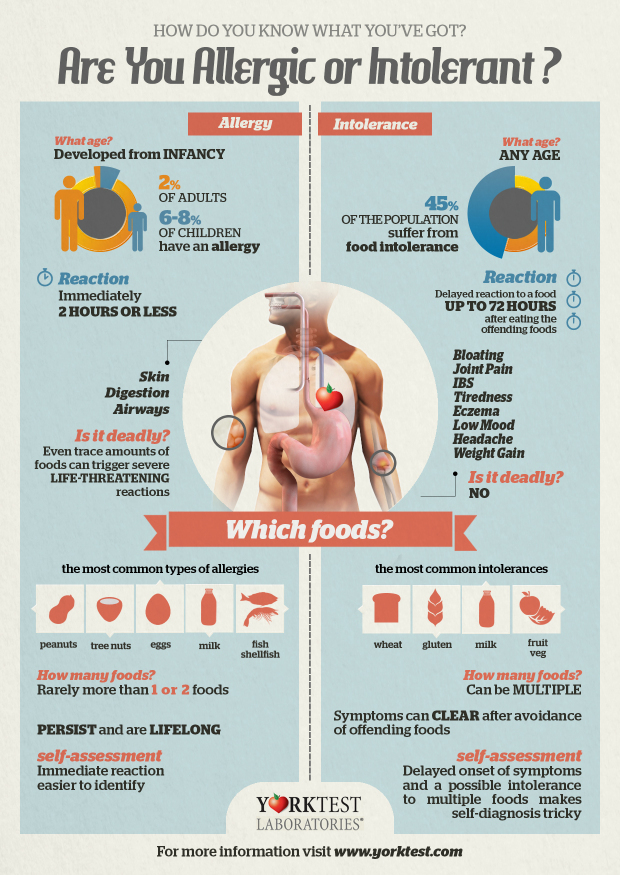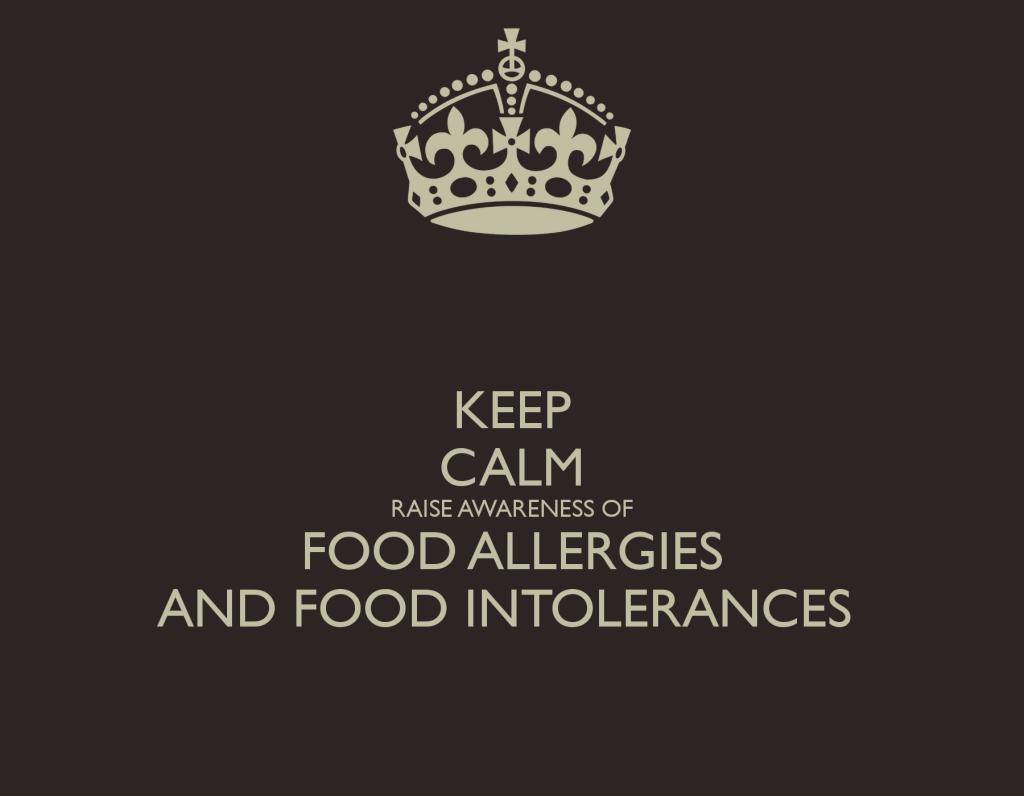A food intolerance is difficulty digesting certain foods and having an unpleasant physical reaction to them.
It causes symptoms, such as bloating and stomach pain, which usually come on a few hours after consuming the food.
The number of people who believe they have a food intolerance has risen dramatically over recent years, but it’s hard to know how many people are truly affected. Many people assume they have a food intolerance when the true cause of their symptoms is something else.
What are the symptoms of food intolerance?
In general, people who have a food intolerance tend to experience:
tummy pain, bloating, wind and/or diarrhoea, or
skin rashes and itching
These symptoms usually come on a few hours after eating the food.
It can be difficult to know for sure whether you have a food intolerance as these are very general symptoms, typical of many other conditions too.
Is there a food intolerance test?
There are no tests for food intolerances. The only way to know if you have one is to monitor your symptoms and the food you eat. See what happens when you cut out the suspected food for a while, and then reintroduce it back into your diet.
Food diary
Try keeping a food diary, noting:
what foods you eat
any symptoms you have after eating these foods
when these symptoms come on
Trial elimination diet
Once you have a good idea which foods may be causing your symptoms, you can try excluding them from your diet one at a time and observing the effect this has.
Try:
Cutting out the suspected food from your diet for two to six weeks and see if your symptoms improve.
Then, reintroduce the food, to see if symptoms return. You may find you can tolerate a certain level, and you only get symptoms if you have more than this amount.
Consider seeing a dietitian to make sure you’re receiving all your recommended daily nutrients while you do this trial. Find a registered dietitian.
Never restrict your child’s diet unless this has been advised by a dietitian or your doctor.
Could my symptoms be something else?
If you regularly have diarrhoea, bloating, tummy pain or skin rashes but you’re not certain of the cause, see your GP.
Your GP may be able to diagnose the cause from your symptoms and medical history. If necessary, they’ll carry out tests, such as blood tests.
You can also do some research yourself. It may help to read up on other conditions that cause similar symptoms. For example, learn about:
food allergy (and read ‘Is it a food intolerance or food allergy?‘ below)
Bowels are sensitive organs, and it’s common to have bowel symptoms when you have been ill or feel run down or stressed.
Is it a food intolerance or food allergy?
A food intolerance is not the same as a food allergy. Here’s how you can tell the difference:
A food allergy:
is a reaction from your immune system (your body’s defence against infection) – your immune system mistakenly treats proteins found in food as a threat
can trigger typical allergy symptoms, such as a rash, wheezing and itching, after eating just a small amount of the food (these symptoms usually come on rapidly)
is often to particular foods – common food allergies in adults are to fish and shellfish and nuts, and in children to milk and eggs as well as to peanuts, other nuts and fish
can be serious
A food intolerance:
doesn’t involve your immune system – there is no allergic reaction, and it is never life-threatening
causes symptoms that come on more slowly, often many hours after eating the problem food
only results in symptoms if you eat reasonable amounts of the food (unlike an allergy, where just traces can trigger a reaction)
can be caused by many different foods
Read about the diagnosis of food allergies.
What causes a food intolerance?
It is often unclear why a person is sensitive to certain foods.
If your symptoms come on after having dairy products, it’s possible you may have lactose intolerance. This means your body can’t digest lactose, a sugar found in milk, yoghurts and soft cheeses. Your GP can usually diagnose lactose intolerance by looking at your symptoms and medical history.
Some people have trouble digesting wheat and experience bloating, wind, diarrhoea, vomiting and stomach pain after eating bread. Read more about wheat intolerance (also known as wheat sensitivity).
Otherwise, the culprit may be a food additive, chemical or contaminant, such as:
monosodium glutamate (MSG)
caffeine
alcohol
artificial sweeteners
histamine (found in Quorn, mushrooms, pickled and cured foods, and alcoholic drinks)
toxins, viruses, bacteria or parasites that have contaminated food
artificial food colours, preservatives or flavour enhancers
Gluten intolerance
Many people cut gluten from their diet thinking that they are intolerant to it, because they have symptoms that come on after eating wheat.
But it’s hard to know whether these symptoms are because of a genuine intolerance to gluten, an intolerance to something else in wheat, or nothing to do with wheat at all. It may help to read Should you cut bread from your diet?
In reality very few people need to cut out gluten from their diet, although it’s important to do so if you have coeliac disease (which is neither an intolerance nor an allergy).
How do I manage it?
If you’re confident you are intolerant to a particular food, the only way you can manage this is to:
stop eating the food for a while, and then
reintroduce small quantities while monitoring how much you can eat without symptoms coming on
By checking food labels, you’ll learn which sorts of foods to avoid.
If you think your child may have a food intolerance, check with your GP or a dietitian before eliminating foods from their diet, as a restricted diet could affect their growth and development. Cows’ milk, for example, is an important source of calcium, vitamin D and protein.
When do I need to see a specialist?
Your GP may want to refer you to a specialist if they’re not sure what’s causing your symptoms and further tests are needed.
You may also be referred if your child has digestive symptoms (such as tummy pain and diarrhoea) and:
isn’t growing well
hasn’t responded to any elimination diet that your healthcare professional recommended
has reacted suddenly or severely to a food
has a suspected food allergy



